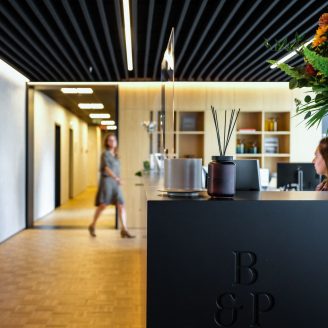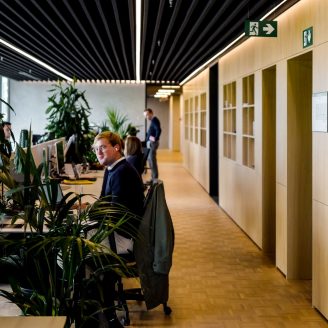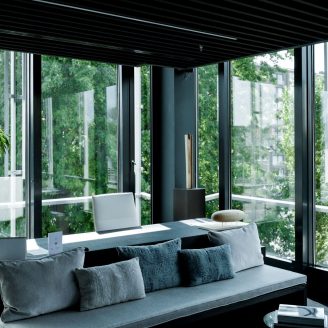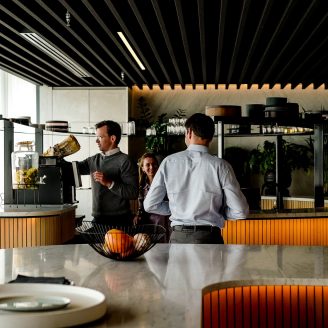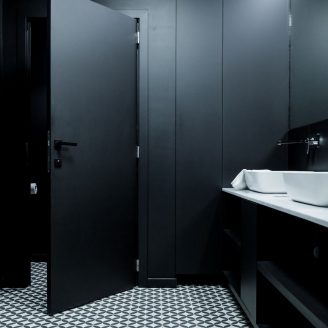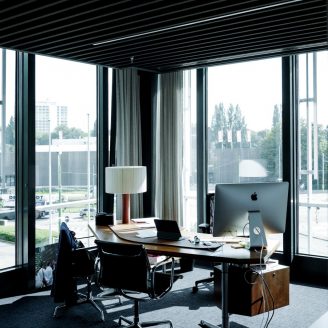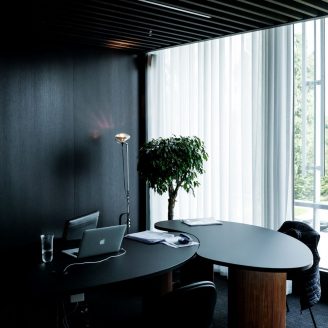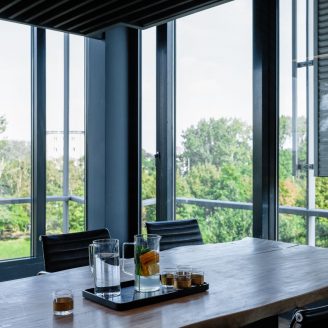Recently, Studio Farris Architects designed the new headquarters of the financial group Buysse & Partners, accommodated inside the famous BP Building in Antwerp, Belgium, designed by Leon Stynen in 1963. Their project focuses on the theme of the domesticity of the office space, achieved through an interplay of openings and relationships between the rooms.
The architects worked on over 800 square meters of surface inside an iconic building of Belgian modernism; an explicit geometric matrix guides the organization of the new offices and enhances the original structural design of Stynen.
The cantilevers and the grid of the facade are supported by steel cables hanging from nine transverse beams placed on the top of the building that rest on the two main beams which in turn release all the weight on the reinforced concrete core. This solution provides all floors of the building with transparency and flexible distribution.
Studio Farris Architects’ project entailed demolishing the existing partitions and designing a workspace that had a home working atmosphere; the architects wanted to maximize the interaction with the exuberant transparency of the building by Stynen.
The new plan layout highlights the distribution determined by the arrangement of cables on the facade and, at the same time, gives a greater openness to the work spaces and to the various lounge areas, resulting in a strong and continuous interaction with the outside.
A ceiling made of black lacquered aluminum elements, rectangular in section and aligned, guides one through the various rooms. Prevalent in the common areas, where it runs along the length of the building, the false ceiling 6 7 also extends to the closed spaces, always maintaining the correspondence with the modulation of the windows and hence of the structure.
The lighting system follows the orientation of the ceiling while the flooring of the open and circulation spaces is made with a square patterned hardwood floor so as not to determine a direction to follow but rather to accommodate the structural modularity of the building in both directions.
The tiling of the closed spaces varies according to the function of the room: checkerboard tiles in the kitchen, “metro” tiles in the bathroom, a carpet in the meeting rooms. Wooden shelving units, also which have been arranged according to Stynen’s plan layout, serve as dividers in the work and relaxation areas.
The reception area defines an airy space that opens completely to the outdoors. A lounge area is located here, which is complemented by a bar and counter where one can eat and have informal gatherings.
At either end of the floor plan are the meeting rooms: on the one hand, there is the executive meeting room with an additional relaxation area; on the opposite side are the other meeting rooms and three small sound-proof chat rooms.
Finally, evoking the theme of domesticity in the office space, the transition from one room to another is marked by a thick black polished wooden frame that, in accentuating once again the structural scheme, adds a sense of comfort and elegance which contributes to enhance the interplay between the rooms and the sense of domesticity. The same is true for the partitions, treated with slaked lime, which reinterpret, with a sensitivity close to some works by Carlo Scarpa, the materiality of the cement found in the central core of the building.


